- Home
- Quizzes
- My Quiz Activity
- Newsletters
- Sports Betting
- MY FAVORITES
- Add Sports/Teams
- SPORTS
-
NFL
- NFL Home
- Arizona Cardinals
- Atlanta Falcons
- Baltimore Ravens
- Buffalo Bills
- Carolina Panthers
- Chicago Bears
- Cincinnati Bengals
- Cleveland Browns
- Dallas Cowboys
- Denver Broncos
- Detroit Lions
- Green Bay Packers
- Houston Texans
- Indianapolis Colts
- Jacksonville Jaguars
- Kansas City Chiefs
- Las Vegas Raiders
- Los Angeles Chargers
- Los Angeles Rams
- Miami Dolphins
- Minnesota Vikings
- New England Patriots
- New Orleans Saints
- New York Jets
- New York Giants
- Philadelphia Eagles
- Pittsburgh Steelers
- San Francisco 49ers
- Seattle Seahawks
- Tampa Bay Buccaneers
- Tennessee Titans
- Washington Commanders
-
MLB
- MLB Home
- Arizona Diamondbacks
- Atlanta Braves
- Baltimore Orioles
- Boston Red Sox
- Chicago White Sox
- Chicago Cubs
- Cincinnati Reds
- Cleveland Guardians
- Colorado Rockies
- Detroit Tigers
- Houston Astros
- Kansas City Royals
- Los Angeles Angels
- Los Angeles Dodgers
- Miami Marlins
- Milwaukee Brewers
- Minnesota Twins
- New York Yankees
- New York Mets
- Oakland Athletics
- Philadelphia Phillies
- Pittsburgh Pirates
- San Diego Padres
- San Francisco Giants
- Seattle Mariners
- St. Louis Cardinals
- Tampa Bay Rays
- Texas Rangers
- Toronto Blue Jays
- Washington Nationals
-
NBA
- NBA Home
- Atlanta Hawks
- Boston Celtics
- Brooklyn Nets
- Charlotte Hornets
- Chicago Bulls
- Cleveland Cavaliers
- Dallas Mavericks
- Denver Nuggets
- Detroit Pistons
- Golden State Warriors
- Houston Rockets
- Indiana Pacers
- Los Angeles Clippers
- Los Angeles Lakers
- Memphis Grizzlies
- Miami Heat
- Milwaukee Bucks
- Minnesota Timberwolves
- New Orleans Pelicans
- New York Knicks
- Oklahoma City Thunder
- Orlando Magic
- Philadelphia 76ers
- Phoenix Suns
- Portland Trail Blazers
- Sacramento Kings
- San Antonio Spurs
- Toronto Raptors
- Utah Jazz
- Washington Wizards
-
NHL
- NHL Home
- Anaheim Ducks
- Arizona Coyotes
- Boston Bruins
- Buffalo Sabres
- Calgary Flames
- Carolina Hurricanes
- Chicago Blackhawks
- Colorado Avalanche
- Columbus Blue Jackets
- Dallas Stars
- Detroit Red Wings
- Edmonton Oilers
- Florida Panthers
- Los Angeles Kings
- Minnesota Wild
- Montreal Canadiens
- Nashville Predators
- New Jersey Devils
- New York Islanders
- New York Rangers
- Ottawa Senators
- Philadelphia Flyers
- Pittsburgh Penguins
- San Jose Sharks
- Seattle Kraken
- St. Louis Blues
- Tampa Bay Lightning
- Toronto Maple Leafs
- Vancouver Canucks
- Vegas Golden Knights
- Washington Capitals
- Winnipeg Jets
- NCAAF
- NCAAM
- Boxing
- Entertainment
- Lifestyle
- Golf
- MMA
- Soccer
- Tennis
- Wrestling
- More Sports
- RESOURCES
- My Account
- YB on Facebook
- YB on Twitter
- YB on Flipboard
- Contact Us
- Privacy Policy
- Terms of Service
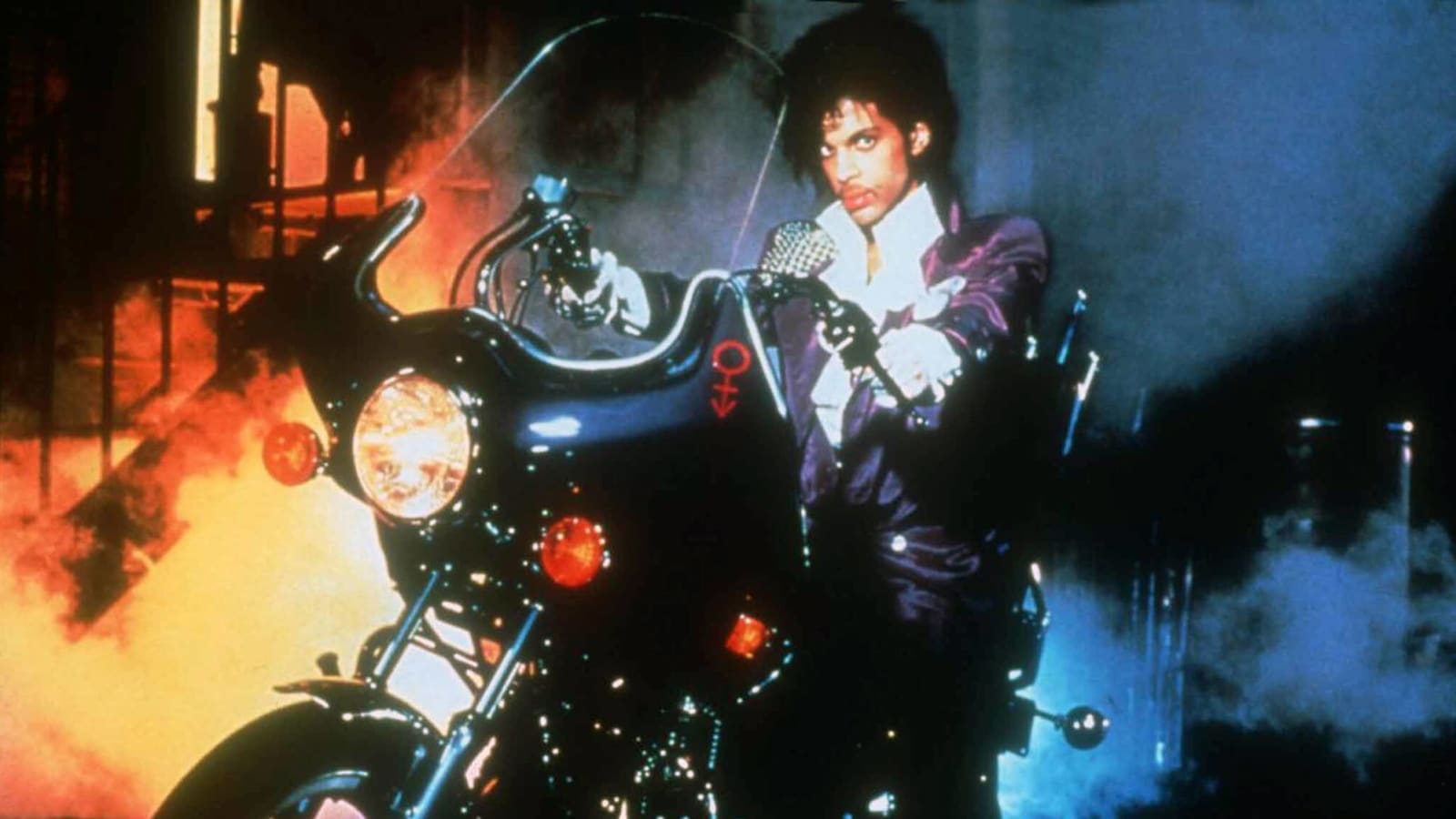
In 1978, a 19-year-old Minneapolis musician named Prince Rogers Nelson arrived on the scene with an album titled "For You." It was an auspicious debut, primarily because the remarkably versatile artist had recorded and performed the entire LP himself. Prince played all 27 instruments. He was a genius from the start, and his sound would only get more sophisticated as he got older. For fans, each new Prince album was a gift from a uniquely gifted and spiritual artist. He forged a deep connection that cannot be broken even after his untimely death in 2016. Want to know which LPs are absolute must-owns? Consider this your buying guide.
"Purple Rain" — 1984
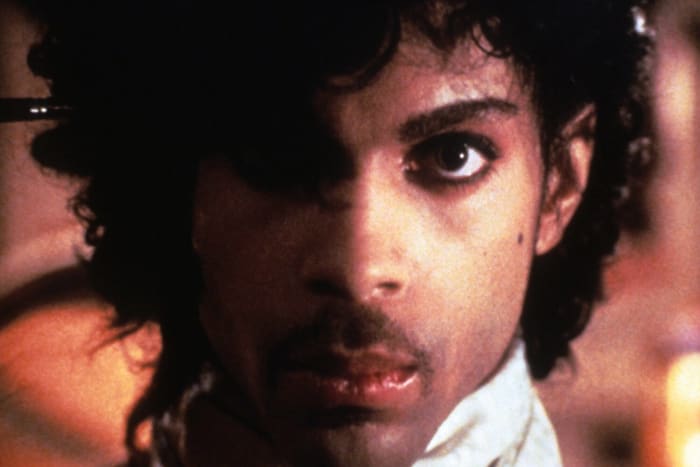
Perfection. Every song could be your favorite Prince song depending on your mood. Feel like raising hell? “Let’s Go Crazy.” Going through a brutal breakup? “The Beautiful Ones.” Reveling in a personal triumph? “Baby I’m a Star.” The great artists often have a moment where it all clicks; their unique talent finds the proper subject, and the dam bursts. It’s tempting to call “Purple Rain” something like “Prince’s ‘Sgt. Pepper,’” but that would only trivialize the achievement. There’s only one “Purple Rain” because there was only one Prince.
"Sign o' the Times" — 1987

“In France, a skinny man died of a big disease with a little name/By chance his girlfriend came across a needle and soon she did the same.” Thus begins Prince’s snapshot of late 1980s anxiety. Always a politically aware artist, this is the first time he evinced an intellectual sophistication equal to his musical genius. He resolves the spiritual conflict with the Christian reaffirmation of “The Cross,” but he throws a hell of a party on the way there with classics like “Housequake,” “U Got the Look,” “Slow Love” and “I Could Never Take the Place of Your Man.”
"1999" — 1982

Prince blossoms. The title track is a classic Sly & the Family Stone homage, with each singer taking a verse in a different vocal register. But “Little Red Corvette” upends formula in ways no recording artist had ever attempted. Structurally, it’s a rock song (replete with a squealing guitar solo), but it swings like a Chuck Berry tune. That’s just the beginning of this weird, semi-conceptual odyssey that concludes with the shamelessly erotic “International Lover.” The only downside to 1999 is the way its songs have been truncated over the years. Outside of listening to the LP, it’s rare to hear the full versions of “1999,” “Little Red Corvette” and “D.M.S.R.” nowadays.
"Parade" — 1986
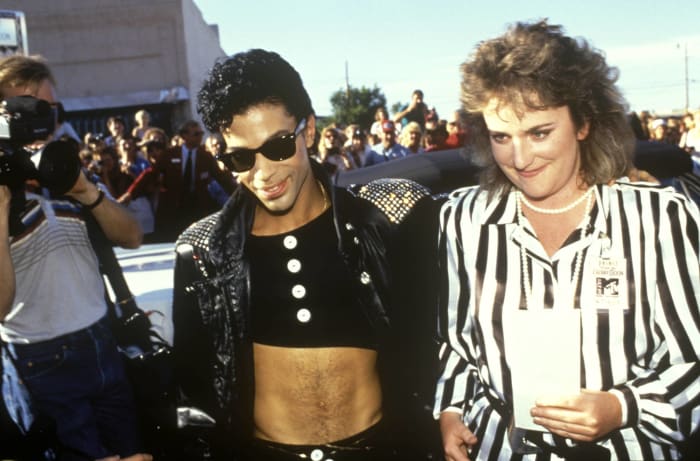
Throw the first four songs away, and what’s left is a perfect eight-song LP. This is the soundtrack to Prince’s box-office failure, “Under the Cherry Moon,” a black-and-white homage to the cinema of the French New Wave. The songs that don’t work are the ones that try to fit into that aesthetic — everything else is prime Prince. The bass-guitar-free “Kiss” is one of Prince’s biggest hits, but it’s the closing combo of “Anotherloverholenyohead” and “Sometimes It Snows in April” that cements this album’s greatness.
"Dirty Mind" — 1980

Prince began to expand his sound on his third album, bringing in Morris Day, keyboardist Doctor Fink and all-around genius Lisa Coleman for songwriting and instrumental assistance. There’s just not a bum song on this LP. With the lone exception of George Clinton, no artist of this era was writing uptempo seductions like “Dirty Mind” and “Partyup.” And right in the middle of the party, Prince throws off a heartbreakingly perfect pop song in “When You Were Mine” (which later became a minor hit for Mitch Ryder).
"Graffiti Bridge" — 1990

As a film, Prince’s sequel to “Purple Rain” is an absolute disaster; as an album, it’s one of his most varied efforts. It opens with “Can’t Stop This Feeling I Got,” which, with minor tweaking, could be a country song. The subsequent track, “New Power Generation,” is pure, unadulterated funk. The LP’s biggest hit, “Round and Round," launched the career of Tevin Campbell. Meanwhile, The Time resurfaced for a couple of party songs. There’s a thematic continuity to the album — it’s about spiritual discovery, and the payoff to Prince’s searching, “Still Would Stand All Time,” is beautiful. But the two best songs are the nastiest: George Clinton guesting on “We Can Funk” and Prince torching his guitar on “Joy in Repetition.”
"Prince" — 1979

Here, Prince puts it all together. His second studio album, Prince quickly clicked all of the pieces together and revealed himself as more than a Smokey Robinson wannabe. The lead track, “I Wanna Be Your Lover,” is far more confident than anything on the previous record, and if the LP has a misstep, it’s that the next-best song, “Why You Wanna Treat Me So Bad,” is the second song up. This is another one-man-band album, but it doesn’t sound as small as “For You.”
"Controversy" — 1981

Prince’s first stab at a concept album is politically naïve (see “Ronnie, Talk to Russia”), but the music is too good for any of that to matter. Following up the superior “Dirty Mind,” this is an artist recognizing his prurient strengths and flaunting them for the entire world to see. The title track is followed by “Sexuality,” which gives way to “Do Me, Baby,” and transgressing never felt so good. Prince gilds the lily by closing out the LP with “Jack U Off,” but it’s in keeping with his mission statement. He’s here to provoke and give you a great goddamn time. Submit to the filth.
"The Gold Experience" — 1995
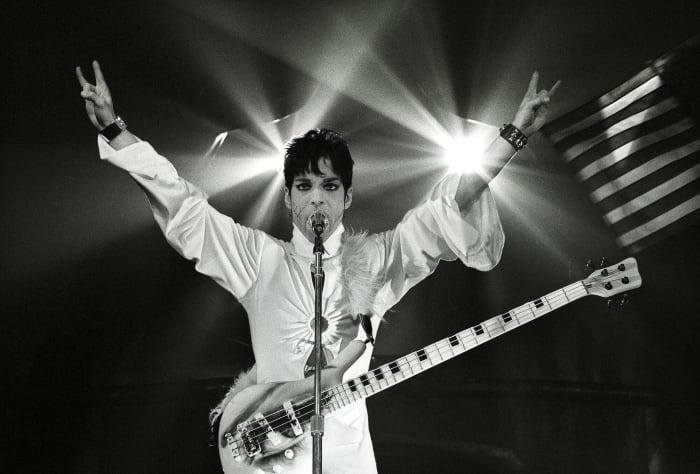
Recorded during the same session that produced “Come,” this album languished on WB’s shelf due to the studio’s concern about oversaturating the market with Prince music. (He was simply too productive for its one-LP-a-year corporate model.) It’s a treasure. The best song is, inexplicably, “Dolphin,” where Prince earnestly asks what might happen if he “came back as a dolphin.” Nonsense? Maybe. But that soaring guitar solo is one for the ages.
"The Love Symbol Album" — 1992

The album that would give Prince his new, unpronounceable name leads off with a defiant reassertion of identity titled “My Name Is Prince.” Suffice to say, this is a conflicted LP, but a conflicted genius often produces great art. “Sexy MF” is as good as music gets, and “The Continental” is a fantastically dirty come-on disguised as a dance track. Only Prince could craft a chart-topping hit out of some vague, Egyptian-inspired hokum like “7.” It may not make any sense, but it has a beat and you can groove to it.
"Diamonds and Pearls" — 1991

This was Prince’s first full-fledged effort with his new backing band, The New Power Generation (NPG), and it swiftly covered up the commercial disappointment of “Graffiti Bridge” (both as a film and an LP). The rambunctious “Gett Off” was the first single, and it’s one of the best songs Prince ever recorded. Then came “Cream,” a sexy, slinky changeup that would’ve been right at home on the surrealistic “Around the World in a Day.” Prince had previously been contemptuous of the rap genre, but he finally gave in and handed the microphone over to frequent collaborator Tony M. He was not particularly adept.
"Around the World in a Day" — 1985

Released less than a year after the debut of “Purple Rain,” “Around the World in a Day” is a surprisingly adventurous LP. Prince could’ve doubled down on the funk-rock of his previous record, but he instead tried on a psychedelic sound that couldn’t have been more out of step with what was popular in 1985. “Raspberry Beret” was a huge hit, but the album’s best songs, “Pop Life” and “The Ladder,” struggle with issues of drug addiction and spirituality.
"The Hits/The B-Sides" — 1993
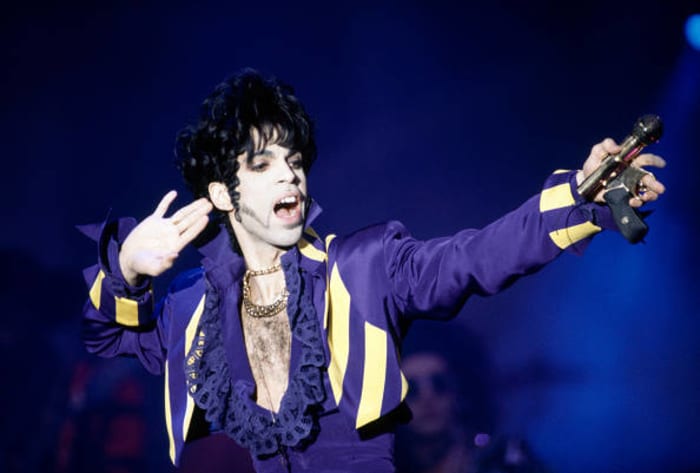
This is Prince’s only greatest hits collection, and this three-CD set is packed with added value. The first two discs are mostly dedicated to his chart-topping classics, but there are some previously released songs mixed in. (“Pink Cashmere” is the best of this group.) The B-Sides are exquisite. It’s the first time a classic like “Erotic City” found its way onto an LP. The only downside is that WB opted for inferior “singles” versions of “I Could Never Take the Place of Your Man” and “Uptown.” They also separate “I Would Die 4 U” from “Baby I’m a Star.” What kind of monster does that?
"The Black Album" — 1987

This is the “evil” album that brought Prince closer to God. Recorded in 1987, Prince abruptly pulled the LP for spiritual reasons, thus turning “The Black Album” into the most sought-after bootleg record until its eventual release in 1994. It was considered a lost masterpiece in music nerd circles, but truthfully it’s only marginally better than the album, “Lovesexy,” that replaced it. It’s one of the darkest works of Prince’s career. “Bob George” finds the artist taking on the identity of a domestic abuser. The best song is the silly “Cindy C,” Prince’s paean to a hot young model named Cindy Crawford, who was making the NYC scene.
"Lovesexy" — 1987

For a replacement LP, this is a shockingly great piece of work. Prince was set to release his down-and-dirty “The Black Album” when he had a religious epiphany that inspired him to shelve the “evil” record entirely. It was Prince’s first commercial failure post-“Purple Rain,” and the early releases of the CD were frustratingly bereft of track stops; it was conceived as one complete song. This is Prince at his most self-indulgent, but “Alphabet St.” and “Glam Slam” are all-timers.
"Emancipation" — 1996

For years, Prince had teased fans and music journalists with the promise of his deep library of unreleased songs. Having burned off his contract with Warner Bros., he finally made good with this three-CD set. Prince fans were prepared for unfettered genius, but what they received felt more like a document dump. There wasn’t a clear concept behind the album; it just rolled out the goods and let listeners sort it out. There are some duds here and there (“Emale” and “My Computer” are the worst of it), but Prince is at his very best with “Jam of the Year,” “Friend, Mother, Sister, Lover/Wife” and “The Holy River.” It’s also his first album to feature covers of other artists’ songs (and they’re all superb).
"Hit n Run Phase Two" — 2015

Prince’s final album (officially the 39th of his career) is a stirring return to form: a true funk/soul album designed to get listeners in the mood for something sinful. It’s an absolute joy to listen to, and at times it sounds like the long-suppressed bad boy who wrote “Erotic City” wants to burst out. Prince had been flirting with a return to his R&B roots for a while, and he finally felt comfortable with the genre in this consistently groovy LP. It’s a shame we never got to see him build on this late-breaking triumph.
"Come" — 1993

A book could be written about this period in Prince’s career. The short version: Prince wrote an “interactive music experience” called “Glam Slam Ulysses,” which was actually performed at the musicians Los Angeles club in 1993. Unfortunately, his ambitions ran counter to WB’s plans for the artist. The studio wanted to mete out the music over years via conventional single LPs. Most of “Glam Slam Ulysses” was dumped on this LP, which an understandably peeved Prince barely promoted. “Letitgo” was the big single, and it’s also the best song on the album.
"Crystal Ball" — 1998

Freed of his Warner Bros. contract, Prince went on an insane music-releasing spree, and the resulting deluge was both inspiring and exhausting. Dedicated fans took the internet to snatch up the five-CD version of this beast, which included a set of acoustic tracks titled “The Truth” and a collection of instrumental songs by the NPG Orchestra called “Kamasutra.” It was a lot to take in, and even the most die-hard Prince fans would be lying if they said could make sense of the full 53-song package. The songs span the near entirety of Prince’s career up to that point, and aside from “Strays of the World” and “Days of Wild,” there’s not a single song that sounds like it had to be on a previous LP. Many of the songs had appeared on previously released bootlegs, but it was gratifying to hear them with a little more polish.
"For You" — 1978

Prince recorded his debut album at the age of 19, and it’s a precocious one-man show. The brilliant kid plays every instrument on the LP, oozing equal amounts of soul and sin over jams like “Soft and Wet” and “Just as Long as We’re Together.” Prince didn’t have a great deal of life experience to draw on as a songwriter, so the tracks are lacking lyrically. But the energy of the thing is infectious.
"Batman" — 1989
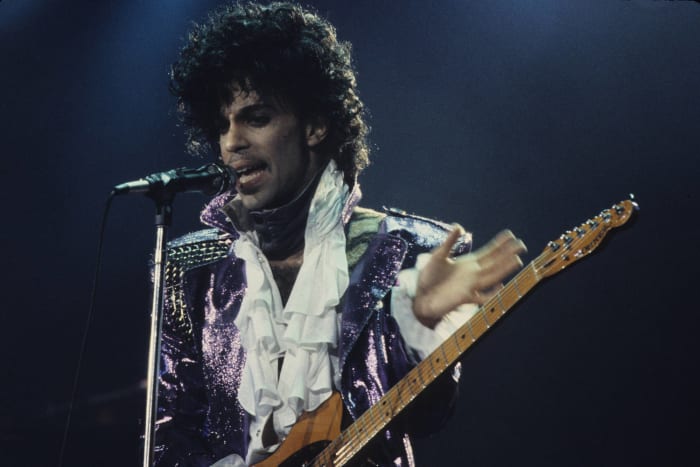
This is one of the least-inspired albums of Prince’s career (he wrote and recorded the songs over six weeks to help WB promote its pricey superhero film), but being that he was in his creative prime, it’s still a delight. The highlight is definitely “Partyman” (an unruly funk track that matches up perfectly with Jack Nicholson’s grandstanding performance as The Joker), but the whole album has an intoxicating party vibe that more than makes up for the lack of a truly memorable melody. “The Arms of Orion,” a duet with Sheena Easton, is a solid ballad, while “Batdance” remains one of the greatest novelty songs ever written.
"Chaos and Disorder" — 1996

Prince had been engaged in a lengthy contract dispute with Warner Bros. — it's what prompted him to scrawl “Slave” on his face and change his name to an unpronounceable symbol — when this hastily assembled LP snuck out of the studio’s vault. It satisfied Prince’s contractual obligations and opened the door for the next phase of his career with the three-CD set, “Emancipation”. As a burn-off record, it’s not bad. “Dinner with Delores” is a gossamer pop ditty in the mold of “The Ballad of Dorothy Parker," but the song selection and sequencing is utterly random. It feels like a collection of B-sides, which is totally fine.
"Musicology" — 2004

Prince seemed in danger of becoming an esoteric, “for fans only” artist in the early part of the 2000s when this album connected with the mainstream for his biggest hit since “Diamonds and Pearls.” It’s Prince’s best-produced LP in a decade in that it doesn’t sound like it was engineered in the early ‘90s (an unfortunate feature of Prince’s best work throughout this period), but there’s only one real standout song: “Illusion, Coma, Pimp & Circumstance.” But the world was ready to fall in love with Prince again, and this album delivered the goods.
"3121" — 2006

Prince’s first LP since his “Musicology” comeback is an agreeable listen, buoyed by the “Kiss”-inspired throwback, “Black Sweat.” Non-fans looking to find a late-career standout would do well to start with “3121." Though the album is laden with Jehovah’s Witnesses references (Prince joined the church in 2001 after a steady proselytization effort by legendary bassist, Larry Graham), it’s about as light and fun as anything Prince put out after disavowing the profane antics that were crucial to the creation of his legend.
"Rave Un2 the Joy Fantastic" — 1999

After years of mining his back catalogue for multidisc LPs, Prince refocused and put out this ambitious collection of new songs featuring collaborations with Sheryl Crow, Gwen Stefani, Chuck D, Eve and Ani DiFranco. It’s a mixed bag. Most of the tracks featuring guest artists fall flat (particularly the awful “So Far, So Pleased” with Stefani), but there are real gems here. “The Greatest Romance Ever Sold” is a terrific ballad, while “Prettyman,” a hidden track on the LP, is a jazzy delight. Given the marketing hype, the album still stands as a disappointment, but the highs more than make up for the low points.
Jeremy Smith is a freelance entertainment writer and the author of "George Clooney: Anatomy of an Actor". His second book, "When It Was Cool", is due out in 2021.
More must-reads:
Trending in Entertainment
Customize Your Newsletter
 +
+
Get the latest news and rumors, customized to your favorite sports and teams. Emailed daily. Always free!
Use of this website (including any and all parts and
components) constitutes your acceptance of these
Terms of Service and Privacy Policy.

